Technology entrepreneur and founder of EMOTIV, Tan Le, and photographer John Tsiavis discuss the creation of her portrait.
This video was produced with funds donated by Tim Fairfax AC.
Technology entrepreneur and founder of EMOTIV, Tan Le, and photographer John Tsiavis discuss the creation of her portrait.
This video was produced with funds donated by Tim Fairfax AC.
[Tan] - My family left Vietnam in 1981, my mother took my sister and I out on a little boat into the South China Sea and when we left, we didn't know, at least she didn't know, where we were going to end up. But what she did know was that she wanted to give us a chance for a better future. We were very lucky because after five days and nights at sea we were rescued by a British oil tanker in the middle of the ocean and it was amazing, because I remember that moment when we approached this oil tanker, it was in the middle of the night, pitch black and you don't see anything. All of a sudden I said to my mum, "Mum, there are so many stars", because the stars were right in front of our faces in the middle of this pitch black ocean, see all of these incredible lights and they were the lights of the oil tanker. We were taken on to the oil tanker and then finally transported to Malaysia where we spent three months in a refugee camp. We were given the opportunity to come to Australia. I remember flying above Australia. I looked out of the window and I saw the expanse of space and there is so much space and so much land in Australia that you can't help but be blown away after being cramped in this refugee camp. Even when we were on the boat, even along the journey, we were cramped underneath most of the time, so everything felt very small. And here was this amazing place where we were going to land and I think it was amazing that we did that because now I'm here as a very proud Australian. Oh yeah, my mother and my grandmother are just both incredible women and I come from a strong lineage of women and, not surprisingly, I'm also a bit of a hard nut myself. My mum is probably the biggest influence in my life, not only did she take her responsibilities as a parent very seriously, but also in terms of, how do you role model for two children in the context of a migrant family resettling in a new country. And for her, education was so fundamental. You know, you can get an education, you can have active participation in citizenship in Australia, you can contribute to your broader community in ways that, not only elevate yourself and your own lot in life, but also to also give in a meaningful way in creating impact on the people around you and I think my mum's own sense of responsibility in how she took her civic duties, trickled through in terms of my own perspective on what my responsibilities are, not just as an Australian, but also as a global citizen and I think that's been a really wonderful lesson to carry in my life. I have always sought to find a way to contribute at the highest contribution value for my own set of experiences and perspectives. As a teenager, I contributed by participating in my own local community organisation and helped people from a non-English speaking background participate meaningfully in work so they could participate in society and resettle in a way that allowed them to feel a sense of dignity and purpose. That led to the Young Australian of the Year Awards. Then when I embarked on my career as a lawyer, I tried very hard to find a way to contribute more broadly to societal structures based on a legal framework. And for a new migrant community, that was a good way that I could help them understand how to negotiate that. But then, what became very clear to me very early on in my career was that technological advancements are driving the future forward and our world forward in a transformational way and so for me, it was very obvious that the trajectory that I was on wouldn't allow me to contribute in a way that I felt was the highest way that I could make an impact, at least in my lifetime so I made a very sharp pivot towards an entrepreneurial path. What we do is neurotechnology and neuroinformatics. Our mission is to accelerate brain research through electroencephalography or EEG for short. It's essentially a process where we measure and interpret and translate, essentially, electrical fluctuations that result from neurons firing and interacting inside the brain. And then once we understand how the brain works, and its connectivity patterns, we can apply it to a myriad of different diverse fields. My hope is that if we can democratise the technology around this and we make it affordable enough, then we will be able to find early enough markers for many of these conditions that are developmental in nature. I think that would be a major win.
[John] - I live in Los Angeles and so I made a trip to San Francisco to meet with Tan. Over the three hours of us chatting and having a good laugh we realised that both of us actually grew up in adjoining suburbs in Melbourne's Western Suburbs. She's from Footscray, I'm from Sunshine and also, we realised that we're the same age, and then we realised that we went to the same high school. She was actually fast tracked through high school whereas we would've been in the same class. We both experienced racism at high school and so, having that conversation with Tan and then having watched her TED talk about being a refugee and the experiences of her family, I guess, it had a huge impact on me, having come from a migrant family myself. I really connected with Tan's family story. So as much as I wanted it to be a portrait of Tan, and I really didn't want to detract from that, I still wanted it to, kind of, touch on issues of like, what it would have been, what would Australia be like, if we turn away people like Tan? You know, how many other people that can contribute to our communities and our society? And also, not only at a communal level, at, like, a global level. If we're looking at what she is doing when it comes to brain technology, she's effectively changed the way we live on a daily basis. So it was really important to bring that in to the piece. In our conversations, Tan and I had discussed suddenly bringing in the idea of technology and that's why I brought in other collaborators. I worked with Professor Colin Hall from the University of Adelaide, I worked with a company who created a privacy film which forces the viewer to have to stand in front of it, the portrait, otherwise it's out of focus, anywhere else in the gallery. And then I'm working with Christopher Boots who has helped me with the fabrication of the piece. There's actually a cross section of about four or five different substrates in technologies into that photo. Initially when Tan and I were discussing the concept, we started talking about the way women are depicted and also Asian women are depicted in imagery, in portraiture, in that they tend to be a lot more demure. We wanted it to be, you know, really badass! She's all these amazing things, she's an entrepreneur, she's been a community leader, she's leading the research in brain technology. So why would this person be depicted anything other than strong, powerful. I realised that the initial portrait that I'd taken of Tan wasn't gonna be as impactful, so therefore, I had to go back and shoot Tan. It was quite embarrassing I felt initially. She was fantastic about it. It was kind of a blessing in that, having that personal rapport with Tan really gave us the opportunity to take it to another level. We also had a couple good bottles of Champagne and hung out and had a really nice time, got pizzas delivered. So you know, there's a lightness that happens when you're then able to meet someone a few more times. I thought that it was really important to create a piece that was interactive. That forced the viewer to come into the gallery and, not just walk past it but to interact and then to have to ask a question. And that's why I integrated the mirror into the portrait. You know it forces, through all these various technologies, it forces people to a, stand in front of it and b then, I hope they then have to look into it and work out, I guess, ask themselves who Tan is, what did she do and also look at what's she's contributed to Australia.
[Tan] - Honestly, it was such an amazing collaboration to work with John because of that shared background. I think the first time that we sat down together for lunch and discovered we had so much in common and so much common ground. I think when you're a Western Suburbs kid, there's a lack of entitlement that is associated with that because you are a new migrant family, you're just starting out, you really don't have an, you expect that you're going to be shaping your life. And often you're the one responsible for also improving the lot of your parents who sacrificed to bring you across and so I think, in many ways, it was really great to work with John because we share that common history and I was shocked that we went to Westbourne together for one year. It's such a significant moment, especially for a migrant family, like we're first generation Australians so we're not a, I'm not a second generation immigrant and so to being able to do this in one generation is a major accomplishment, but it also symbolises a lot for what's possible with people who've come from another place and the grit and dedication that they forge and that they give back to society so I think that's really wonderful. It's amazing!
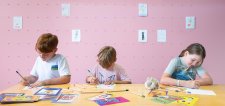
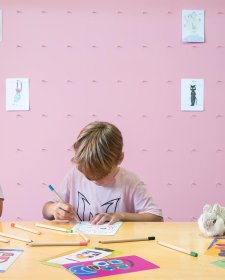

Drop into the Gallery any time for free creative activities inspired by artist Thom Roberts and his exhibition, The Immersive World of Thom Roberts.
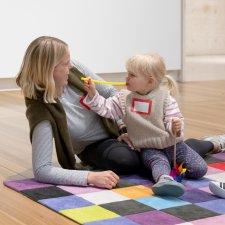
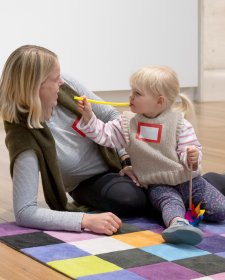
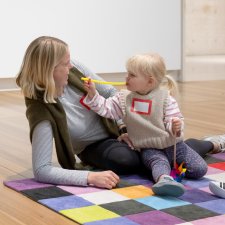
Join us for Portrait Play these school holidays as we explore portraits and music. Come and meet the people that live on our walls, discover musical instruments hidden in the portraits and get creative on your journey through the galleries.
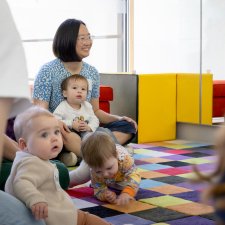
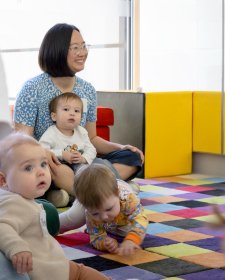
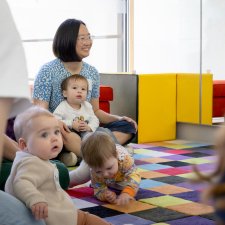
Do we have a treat for the smaller humans in your life! Little Faces is for babies and toddlers (with their grown up) to play, sing and have fun discovering a portrait together.